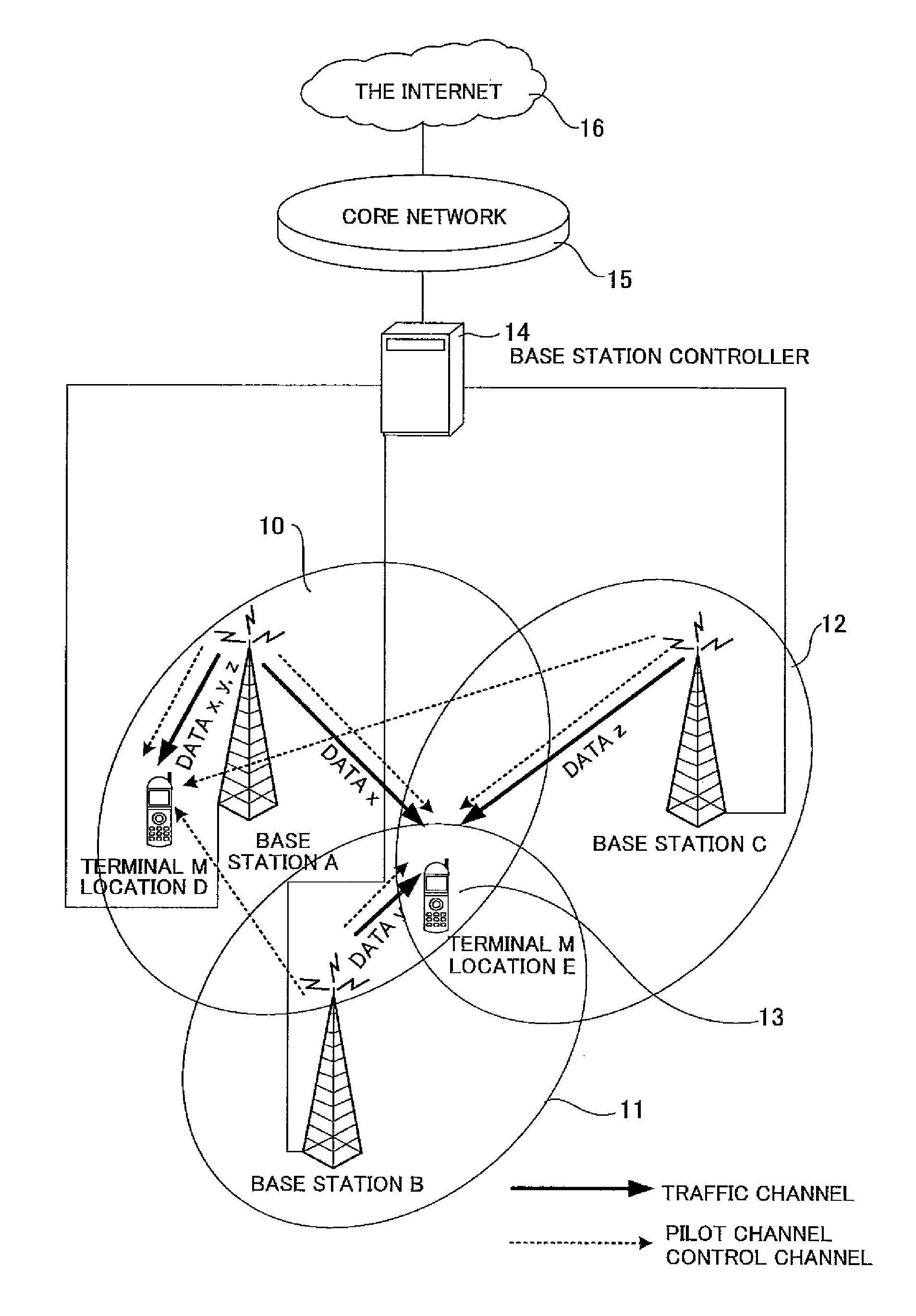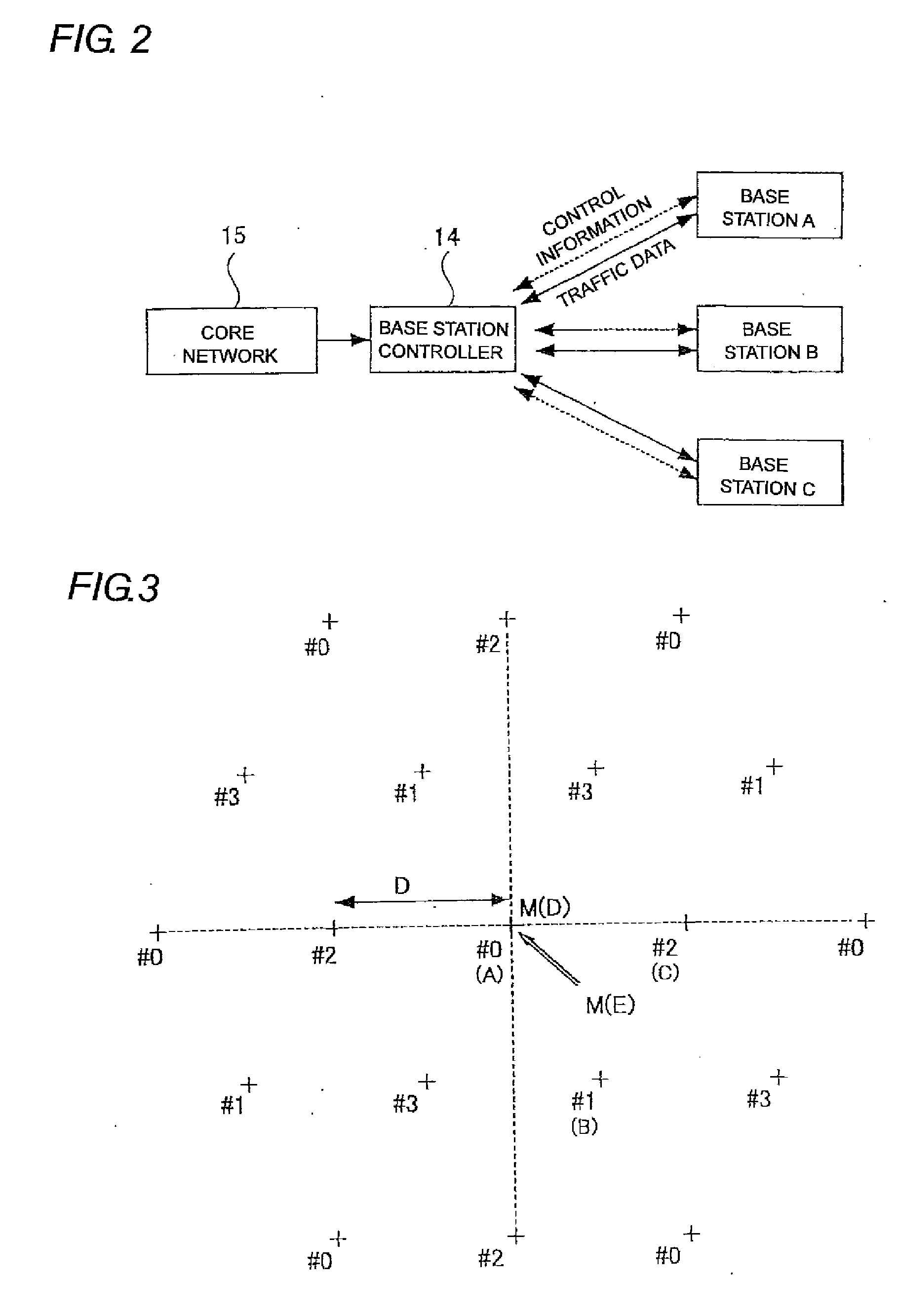Cellular mobile communication system, base station transmission device and mobile station reception device in cellular mobile communication system, and base station selection control method in cellular mobile communication system
a technology of cellular mobile communication system and transmission device, which is applied in the direction of site diversity, channel coding adaptation, signalling characterisation, etc., to achieve the effect of reducing a communication speed, enhancing communication quality, and increasing the operating rate of the base station
- Summary
- Abstract
- Description
- Claims
- Application Information
AI Technical Summary
Benefits of technology
Problems solved by technology
Method used
Image
Examples
first embodiment
Explanation of First Embodiment
[0292]The present embodiment is an example of the base station selection control method when the mobile station receiver measures the receiving levels of the respective base stations, selects base station candidates according to the quality of a communication path, and thereafter also selects a final base station (which results in selection of a communication mode).
[0293]FIG. 26 is a flowchart showing a procedure when one base station is selected by a base station selection means of the receiver in the mobile station M and the first communication mode is selected by the base station controller.
[0294]Operations of the base station controller, the base station, and the mobile station will be explained below based on the flowchart shown in FIG. 26.
[0295]First, the pilot channel signal processing unit 41 receives the pilot signal of a peripheral base station (step S100). Then, the pilot channel signal processing unit 41 measures the received signal levels ...
second embodiment
Explanation of Second Embodiment
[0306]The present embodiment is an example of the base station selection control method when the mobile station receiver measures the receiving levels of the respective base stations, selects candidates of a base station according to the quality of a communication path, and thereafter selects a plurality of final base stations. The second embodiment is different from the first embodiment in that it is an example of a base station selection control method by which the base station controller determines a final communication mode according to the allowance of a traffic amount.
[0307]Further, FIG. 27 is a flowchart showing a procedure when a base station selection means of the receiver in the mobile station M selects a plurality of base station candidates and determines final base stations, and thereafter the base station controller selects the second communication mode.
[0308]Further, FIG. 28 is a flowchart showing a procedure when a base station selectio...
third embodiment
Explanation of Third Embodiment
[0320]The present embodiment is an example of the base station selection control method in which after the mobile station receiver measures the receiving levels of the respective base stations and selects base station candidates having the maximum receiving level, the base station controller selects a final base station.
[0321]Further, FIG. 29 is a flowchart showing a procedure when the base station selection means of the mobile station receiver selects base station candidates having the maximum receiving level, and the base station selection means of the base station controller selects a final the base station and the first communication mode.
[0322]Operations of the base station controller, the base station, and the mobile station will be explained below based on the flowchart shown in FIG. 29.
[0323]Since the processings from step S100 to step S102 are the same as those shown in the flow shown in FIG. 26, the explanation thereof is omitted. The present...
PUM
 Login to View More
Login to View More Abstract
Description
Claims
Application Information
 Login to View More
Login to View More - R&D
- Intellectual Property
- Life Sciences
- Materials
- Tech Scout
- Unparalleled Data Quality
- Higher Quality Content
- 60% Fewer Hallucinations
Browse by: Latest US Patents, China's latest patents, Technical Efficacy Thesaurus, Application Domain, Technology Topic, Popular Technical Reports.
© 2025 PatSnap. All rights reserved.Legal|Privacy policy|Modern Slavery Act Transparency Statement|Sitemap|About US| Contact US: help@patsnap.com



